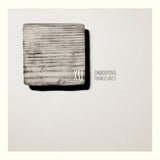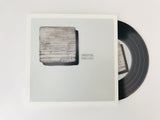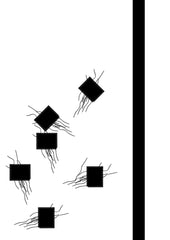Quickview
{"id":9043973669114,"title":"Wil Bolton \/\/ Like Floating Leaves LP [COLOR]","handle":"wil-bolton-like-floating-leaves-lp-color","description":"\u003cp\u003eイギリス・ロンドンのアンビエント作家Wil Boltonが、2023年3月にフランスのアンビエントレーベルlaapsからリリースしたアルバムです。\u003c\/p\u003e\n\u003cp\u003e微睡系アンビエント6曲を収録。クリア盤です。廃盤です。\u003c\/p\u003e\n\u003cp\u003e※デジタル音源を無料でお送りいたしますのでお気軽にご連絡くださいませ\u003c\/p\u003e\n\u003cp\u003e\u003ciframe src=\"https:\/\/bandcamp.com\/EmbeddedPlayer\/album=1086039061\/size=large\/bgcol=ffffff\/linkcol=0687f5\/tracklist=false\/artwork=small\/transparent=true\/\" style=\"border: 0; width: 100%; height: 120px;\"\u003e\u003c\/iframe\u003e\u003c\/p\u003e\n\u003cp\u003eレーベルその他作品は\u003ca href=\"https:\/\/tobirarecords.com\/collections\/laaps\"\u003eこちら\u003c\/a\u003e\u003cspan\u003e \u003c\/span\u003e\/\/\/ Click \u003ca href=\"https:\/\/tobirarecords.com\/collections\/laaps\"\u003ehere\u003c\/a\u003e to see more Laaps \/ IIKKI releases available at Tobira. \u003c\/p\u003e\n\u003cp\u003e----------------------------\u003c\/p\u003e\n\u003cp\u003eEdition of 300. Hand numbered. Pressed on 12\" clear vinyl. \u003cspan class=\"bcTruncateMore\"\u003e\u003c\/span\u003e\u003c\/p\u003e\n\u003cp\u003e\u003cspan class=\"bcTruncateMore\"\u003e\u003cbr data-mce-fragment=\"1\"\u003e\u003cspan data-mce-fragment=\"1\"\u003etracklist:\u003c\/span\u003e\u003cbr data-mce-fragment=\"1\"\u003e\u003cspan data-mce-fragment=\"1\"\u003eA1 Like Floating Leaves\u003c\/span\u003e\u003cbr data-mce-fragment=\"1\"\u003e\u003cspan data-mce-fragment=\"1\"\u003eA2 Of Ruins\u003c\/span\u003e\u003cbr data-mce-fragment=\"1\"\u003e\u003cspan data-mce-fragment=\"1\"\u003eA3 A Wave of Verticals\u003c\/span\u003e\u003cbr data-mce-fragment=\"1\"\u003e\u003cspan data-mce-fragment=\"1\"\u003eB1 Saffron\u003c\/span\u003e\u003cbr data-mce-fragment=\"1\"\u003e\u003cspan data-mce-fragment=\"1\"\u003eB2 Marble and Ash\u003c\/span\u003e\u003cbr data-mce-fragment=\"1\"\u003e\u003cspan data-mce-fragment=\"1\"\u003eB3 Fumage\u003c\/span\u003e\u003cbr data-mce-fragment=\"1\"\u003e\u003cspan data-mce-fragment=\"1\"\u003e_____________________\u003c\/span\u003e\u003cbr data-mce-fragment=\"1\"\u003e\u003cbr data-mce-fragment=\"1\"\u003e\u003cspan data-mce-fragment=\"1\"\u003eduration(s) : 40.37 mn (LP) \u003c\/span\u003e\u003cbr data-mce-fragment=\"1\"\u003e\u003cspan data-mce-fragment=\"1\"\u003e___________________________________________________\u003c\/span\u003e\u003cbr data-mce-fragment=\"1\"\u003e\u003cbr data-mce-fragment=\"1\"\u003e\u003cem\u003eWil Bolton is a London-based artist whose work uses synthesizers, guitars, acoustic instruments and effects to create warm and emotive melodies, fragmented and submerged among beds of droning ambient textures and environmental sounds.\u003c\/em\u003e\u003cbr data-mce-fragment=\"1\"\u003e\u003cem\u003e\u2028\u003c\/em\u003e\u003cbr data-mce-fragment=\"1\"\u003e\u003cem\u003eWil has released albums on labels including Home Normal, Hidden Vibes, Krysalisound, Audiobulb, Hibernate, Eilean Rec., Dronarivm and Sound In Silence. He has also shown his sound and video works in exhibitions at ICA, Incheon Art Platform, Liverpool Biennial and others, and has performed at venues including Cafe Oto, Tate Liverpool and Iklectik.\u003c\/em\u003e\u003cbr data-mce-fragment=\"1\"\u003e\u003cem\u003e\u2028\u003c\/em\u003e\u003cbr data-mce-fragment=\"1\"\u003e\u003cem\u003e‘Like Floating Leaves’ was recorded January - July 2022 in East London, using modular synthesizers, Mellotron, Yamaha PSR-6, Waldorf Micro Q, Modal Argon8, OP-1, iPhone, glockenspiel, chimes, effects and field recordings from Venice, Stockholm, New York and Tokyo.\u003c\/em\u003e\u003cbr\u003e\u003cbr\u003e\u003c\/span\u003e\u003c\/p\u003e\n\u003cp\u003eArtist : Wil Bolton\u003c\/p\u003e\n\u003cp\u003eLabel : Laaps\u003c\/p\u003e","published_at":"2026-01-01T05:34:16+09:00","created_at":"2026-01-01T05:33:46+09:00","vendor":"Tobira Records","type":"","tags":["ambient","Laaps","lp","new"],"price":418000,"price_min":418000,"price_max":418000,"available":true,"price_varies":false,"compare_at_price":null,"compare_at_price_min":0,"compare_at_price_max":0,"compare_at_price_varies":false,"variants":[{"id":48174276968698,"title":"Default Title","option1":"Default Title","option2":null,"option3":null,"sku":null,"requires_shipping":true,"taxable":true,"featured_image":null,"available":true,"name":"Wil Bolton \/\/ Like Floating Leaves LP [COLOR]","public_title":null,"options":["Default Title"],"price":418000,"weight":430,"compare_at_price":null,"inventory_management":"shopify","barcode":null,"requires_selling_plan":false,"selling_plan_allocations":[]}],"images":["\/\/tobirarecords.com\/cdn\/shop\/products\/a1279369572_16.jpg?v=1679880451","\/\/tobirarecords.com\/cdn\/shop\/products\/0031288954_10.jpg?v=1679880451","\/\/tobirarecords.com\/cdn\/shop\/products\/0031288956_10.jpg?v=1679880329"],"featured_image":"\/\/tobirarecords.com\/cdn\/shop\/products\/a1279369572_16.jpg?v=1679880451","options":["Title"],"media":[{"alt":null,"id":31738613989626,"position":1,"preview_image":{"aspect_ratio":1.0,"height":700,"width":700,"src":"\/\/tobirarecords.com\/cdn\/shop\/products\/a1279369572_16.jpg?v=1679880451"},"aspect_ratio":1.0,"height":700,"media_type":"image","src":"\/\/tobirarecords.com\/cdn\/shop\/products\/a1279369572_16.jpg?v=1679880451","width":700},{"alt":null,"id":31738613956858,"position":2,"preview_image":{"aspect_ratio":1.521,"height":789,"width":1200,"src":"\/\/tobirarecords.com\/cdn\/shop\/products\/0031288954_10.jpg?v=1679880451"},"aspect_ratio":1.521,"height":789,"media_type":"image","src":"\/\/tobirarecords.com\/cdn\/shop\/products\/0031288954_10.jpg?v=1679880451","width":1200},{"alt":null,"id":31738614120698,"position":3,"preview_image":{"aspect_ratio":1.412,"height":850,"width":1200,"src":"\/\/tobirarecords.com\/cdn\/shop\/products\/0031288956_10.jpg?v=1679880329"},"aspect_ratio":1.412,"height":850,"media_type":"image","src":"\/\/tobirarecords.com\/cdn\/shop\/products\/0031288956_10.jpg?v=1679880329","width":1200}],"requires_selling_plan":false,"selling_plan_groups":[],"content":"\u003cp\u003eイギリス・ロンドンのアンビエント作家Wil Boltonが、2023年3月にフランスのアンビエントレーベルlaapsからリリースしたアルバムです。\u003c\/p\u003e\n\u003cp\u003e微睡系アンビエント6曲を収録。クリア盤です。廃盤です。\u003c\/p\u003e\n\u003cp\u003e※デジタル音源を無料でお送りいたしますのでお気軽にご連絡くださいませ\u003c\/p\u003e\n\u003cp\u003e\u003ciframe src=\"https:\/\/bandcamp.com\/EmbeddedPlayer\/album=1086039061\/size=large\/bgcol=ffffff\/linkcol=0687f5\/tracklist=false\/artwork=small\/transparent=true\/\" style=\"border: 0; width: 100%; height: 120px;\"\u003e\u003c\/iframe\u003e\u003c\/p\u003e\n\u003cp\u003eレーベルその他作品は\u003ca href=\"https:\/\/tobirarecords.com\/collections\/laaps\"\u003eこちら\u003c\/a\u003e\u003cspan\u003e \u003c\/span\u003e\/\/\/ Click \u003ca href=\"https:\/\/tobirarecords.com\/collections\/laaps\"\u003ehere\u003c\/a\u003e to see more Laaps \/ IIKKI releases available at Tobira. \u003c\/p\u003e\n\u003cp\u003e----------------------------\u003c\/p\u003e\n\u003cp\u003eEdition of 300. Hand numbered. Pressed on 12\" clear vinyl. \u003cspan class=\"bcTruncateMore\"\u003e\u003c\/span\u003e\u003c\/p\u003e\n\u003cp\u003e\u003cspan class=\"bcTruncateMore\"\u003e\u003cbr data-mce-fragment=\"1\"\u003e\u003cspan data-mce-fragment=\"1\"\u003etracklist:\u003c\/span\u003e\u003cbr data-mce-fragment=\"1\"\u003e\u003cspan data-mce-fragment=\"1\"\u003eA1 Like Floating Leaves\u003c\/span\u003e\u003cbr data-mce-fragment=\"1\"\u003e\u003cspan data-mce-fragment=\"1\"\u003eA2 Of Ruins\u003c\/span\u003e\u003cbr data-mce-fragment=\"1\"\u003e\u003cspan data-mce-fragment=\"1\"\u003eA3 A Wave of Verticals\u003c\/span\u003e\u003cbr data-mce-fragment=\"1\"\u003e\u003cspan data-mce-fragment=\"1\"\u003eB1 Saffron\u003c\/span\u003e\u003cbr data-mce-fragment=\"1\"\u003e\u003cspan data-mce-fragment=\"1\"\u003eB2 Marble and Ash\u003c\/span\u003e\u003cbr data-mce-fragment=\"1\"\u003e\u003cspan data-mce-fragment=\"1\"\u003eB3 Fumage\u003c\/span\u003e\u003cbr data-mce-fragment=\"1\"\u003e\u003cspan data-mce-fragment=\"1\"\u003e_____________________\u003c\/span\u003e\u003cbr data-mce-fragment=\"1\"\u003e\u003cbr data-mce-fragment=\"1\"\u003e\u003cspan data-mce-fragment=\"1\"\u003eduration(s) : 40.37 mn (LP) \u003c\/span\u003e\u003cbr data-mce-fragment=\"1\"\u003e\u003cspan data-mce-fragment=\"1\"\u003e___________________________________________________\u003c\/span\u003e\u003cbr data-mce-fragment=\"1\"\u003e\u003cbr data-mce-fragment=\"1\"\u003e\u003cem\u003eWil Bolton is a London-based artist whose work uses synthesizers, guitars, acoustic instruments and effects to create warm and emotive melodies, fragmented and submerged among beds of droning ambient textures and environmental sounds.\u003c\/em\u003e\u003cbr data-mce-fragment=\"1\"\u003e\u003cem\u003e\u2028\u003c\/em\u003e\u003cbr data-mce-fragment=\"1\"\u003e\u003cem\u003eWil has released albums on labels including Home Normal, Hidden Vibes, Krysalisound, Audiobulb, Hibernate, Eilean Rec., Dronarivm and Sound In Silence. He has also shown his sound and video works in exhibitions at ICA, Incheon Art Platform, Liverpool Biennial and others, and has performed at venues including Cafe Oto, Tate Liverpool and Iklectik.\u003c\/em\u003e\u003cbr data-mce-fragment=\"1\"\u003e\u003cem\u003e\u2028\u003c\/em\u003e\u003cbr data-mce-fragment=\"1\"\u003e\u003cem\u003e‘Like Floating Leaves’ was recorded January - July 2022 in East London, using modular synthesizers, Mellotron, Yamaha PSR-6, Waldorf Micro Q, Modal Argon8, OP-1, iPhone, glockenspiel, chimes, effects and field recordings from Venice, Stockholm, New York and Tokyo.\u003c\/em\u003e\u003cbr\u003e\u003cbr\u003e\u003c\/span\u003e\u003c\/p\u003e\n\u003cp\u003eArtist : Wil Bolton\u003c\/p\u003e\n\u003cp\u003eLabel : Laaps\u003c\/p\u003e"}







![Wil Bolton // Like Floating Leaves LP [COLOR]](http://tobirarecords.com/cdn/shop/products/a1279369572_16_medium.jpg?v=1679880451)